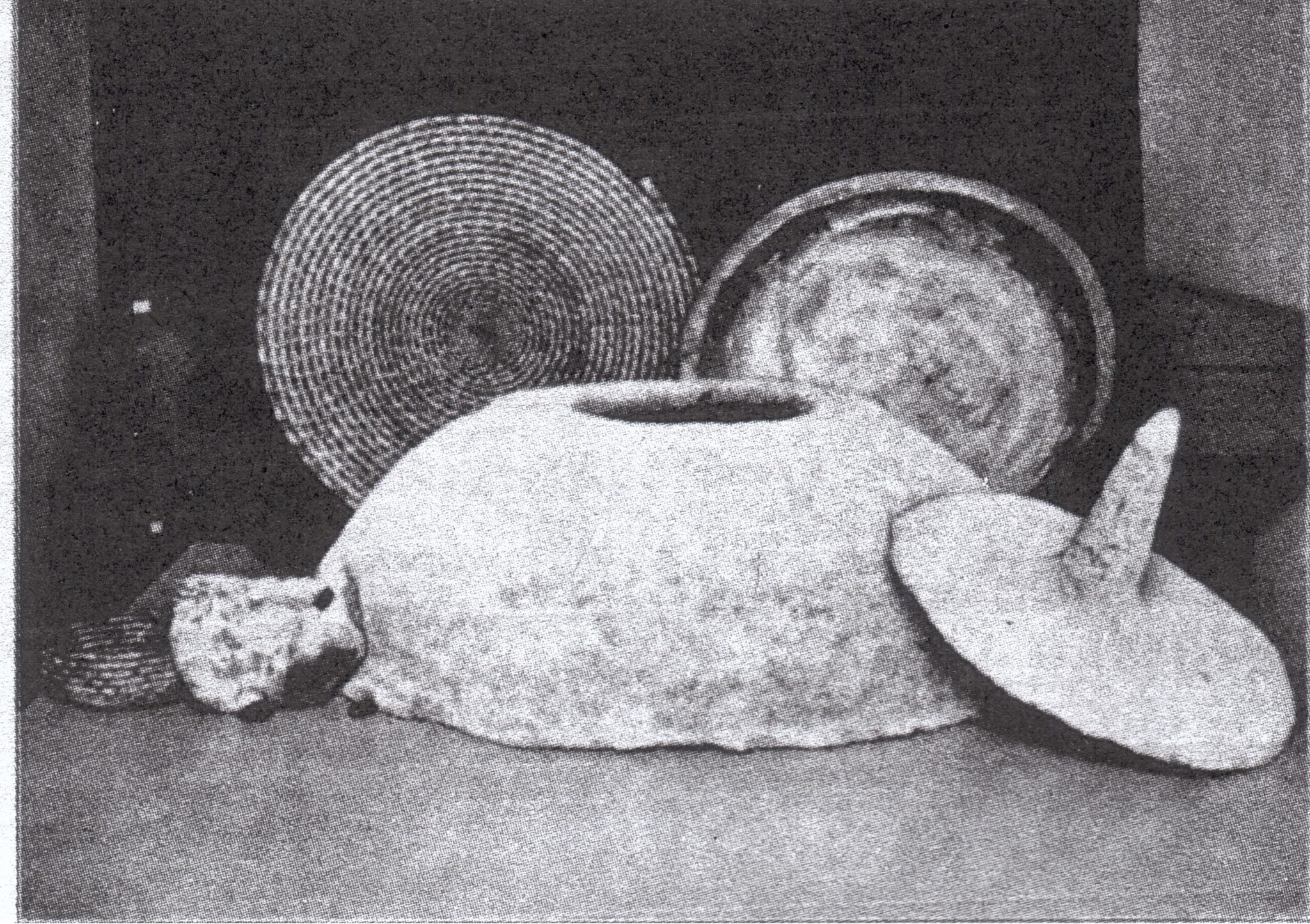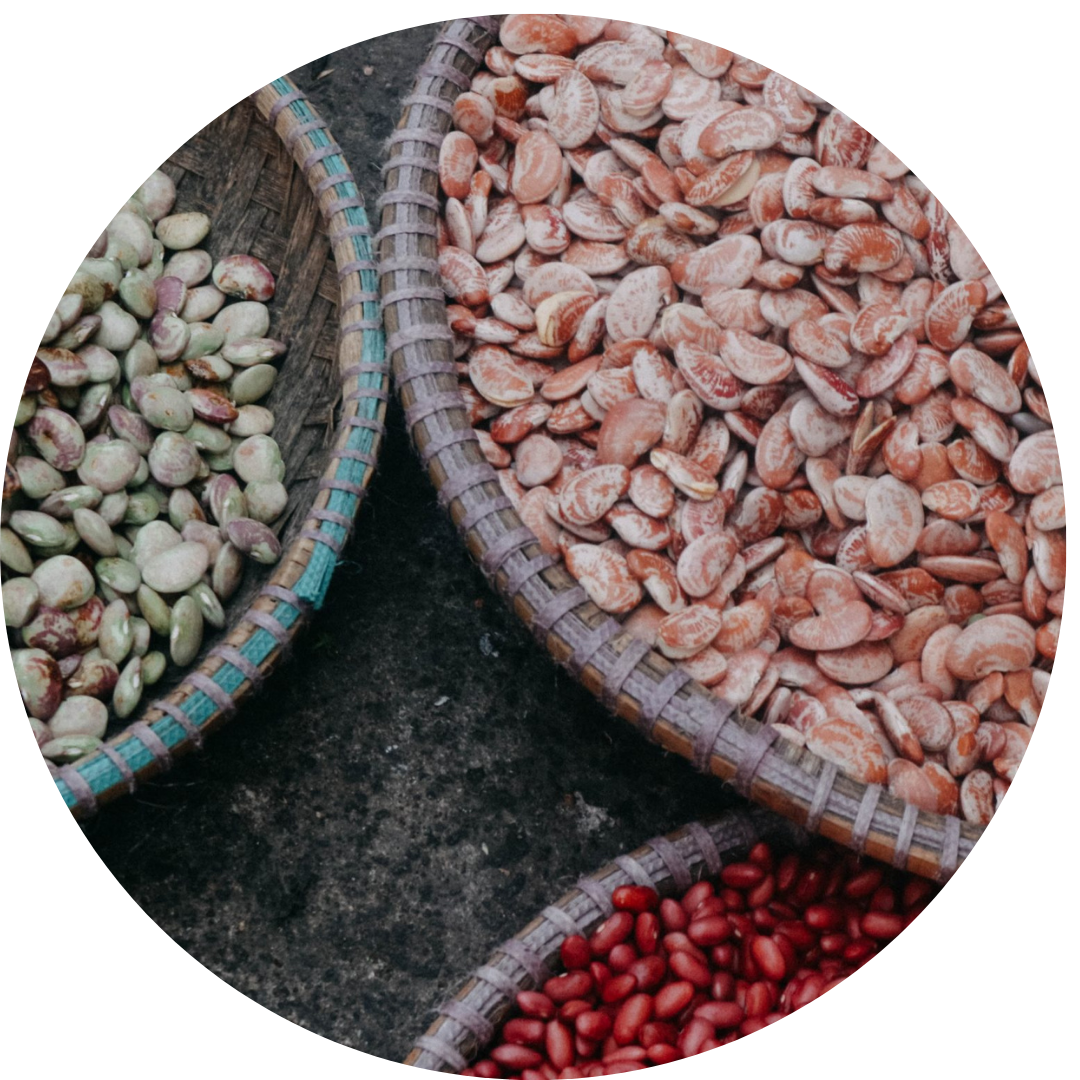The Last Supper Jesus ate with his disciples plays a big part in the story of Christianity. At the meal, Jesus instituted the sacrament of Communion. More than 2,000 years later, followers of Christ are still recreating this meal in remembrance of Jesus. Food and drink also play a central role in several other stories from Jesus’s life, like the wedding at Cana and the feeding of the 5,000. The table seems to matter to Jesus. But what did Jesus eat at his table? What was eaten at the Last Supper? If you were having dinner with Jesus, what would the meal be like?
I did a little digging to find out what biblical scholars and historians know about the foods and drinks Jesus might have enjoyed.
What did Jesus eat on a typical day?
The short answer: a lot of bread. Bread was a staple in the typical daily diet in the first-century Greco-Roman world, supplemented with limited amounts of local fruits and vegetables, oil, and salt.
Bread in first-century Galilee would have been made with wheat or barley flour. Cooks had to grind grain into flour by hand using a tool called a quern. To leaven bread, bakers might use leftover dough from a previous batch of bread, which already had wild yeast growing in it, as a starter. Ingredients like olive oil, salt, and honey could have been included in some breads for flavor and texture. Bread was baked in small, domed clay ovens. Called tabun ovens, similar ovens are still in use across the Middle East today.
Bread might be dipped in olive oil and served with olives or legumes to make the meal more substantial. Cheese, dates, and honey were also fairly commonplace menu items in first-century Galilee.

Called a tabun oven, this clay oven is similar to the ovens people used to make the bread Jesus ate.
There’s biblical reasons to think Jesus ate fish somewhat regularly as well. Fish was the food the disciples gave to a post-resurrection Jesus when he asked for something to eat so that he could show them he was really back from the dead. Fish was also on the menu when Jesus famously fed 5,000 people.
Several of Jesus’s disciples were even fishermen by trade. And Jesus’s ministry brought him to areas where fresh fish would have been plentiful, both for sale and to catch. There are several stories about Jesus and his disciples crossing the sea of Galilee in a boat. It’s not hard to imagine that the disciples tried to catch a few fish along the way. So there’s good reason to think fish might have been a regular entree for Jesus and his followers.
As a Jew, Jesus would have observed the Jewish dietary laws. (In other words, he would stick to the Kosher section of the grocery store today.) We know that ancient Israelites ate lamb and goat meat, but meat was probably more of a special treat for Jesus than a daily staple. Instead, he might have relied on legumes, like beans or lentils, and fish for protein.
What did Jesus drink?
The most common beverages in Jesus’s day were wine and water. And the way many people drank them was mixed together. Ancient Greeks and Romans always diluted their wine with water before drinking it. And the Jewish Talmud indicates that the ancient Israelites did the same. So Jesus probably drank a lot of watered-down wine.
However, diluted doesn’t mean alcohol-free. The biblical evidence suggests that the wine Jesus drank was alcoholic. Of the 37 references to wine in the New Testament, 33 use the Greek word oinos. This word designates wine that is fermented. In other words, when the New Testament references wine, it’s generally not talking about grape juice.
Most of the wine made in the Holy Land during antiquity was red. And Jesus must have been thinking of deep, rich red wines when he decided to use it as a symbol of blood. But white wine could have been available to Jesus, too. Israeli vintner Avi Feldstein believes dabouki white wine, made with one of the oldest grape varieties in the Holy Land, could be close to what Jesus drank.

The ruins of an ancient Israeli winepress.
Wine grapes were grown locally in Galilee and modern-day Jordan. Winemakers poured their grapes into the vats of stone winepresses, where several men tread on the grapes. As the grapes were pressed, juice flowed through a connected channel containing a filter of thorns into a smaller vat below. From the second vat, juice could be poured into containers (usually earthenware pots or wineskins made of goat and lamb hides) and sealed up to begin fermentation. The resulting wine probably would have tasted quite different from wine today.
Shipped in ceramic or wood casks, the wine would have taken on the flavor of its container. According to Patrick McGovern, an archaeologist at the University of Pennsylvania, wine in antiquity was also flavored with tree resins, capers, and peppers.
What did Jesus eat at the Last Supper?
The gospel accounts tell us that Jesus and his disciples ate bread and drank wine at the Last Supper. However, bread and wine probably weren’t the only things on the table.
The Last Supper may have been a Passover meal. Passover is when Jews remember their exodus from Egypt. The gospels of Mark, Luke, and Matthew place the meal during the Jewish Passover on the day of Unleavened Bread.* This is the first day of the seven-day Passover celebration. On this day, Jews traditionally traveled to the temple in Jerusalem to sacrifice a Passover lamb. Today, this day of Passover is celebrated in Judaism with the Seder supper.
The modern Seder tradition didn’t emerge until the temple in Jerusalem was destroyed in 70 A.D., but Jews in Jesus’s time did share in a Passover meal after making their temple sacrifice. It wouldn’t have looked like a modern Seder, and the historical record of the Passover meal before the Seder tradition is less detailed. But we do know that the Passover meal would have included unleavened bread and likely a roast lamb. So if the Last Supper was a Passover meal, we can probably place those two foods on the table.
For a fuller menu, we have to do a bit of guesswork. But in 2016, two Italian archaeologists published a study on what was eaten at the Last Supper that included a reconstructed menu. The two archaeologists drew from Bible verses, Jewish texts, ancient Roman literature, and archaeological data to learn about what people ate in Jerusalem during the first century A.D.
Based on their research, they hypothesized that the menu for the Last Supper would have featured bean stew, lamb, bitter herbs, fish sauce, unleavened bread, dates, and aromatized wine.
Reconstructed Last Supper meal

Bean stew

Lamb

Bitter herbs

Fish sauce

Unleavened bread

Dates

Aromatic wine
This menu reflects both that Jesus and his disciples were practicing Jews who may have been celebrating Passover, and that Roman culture surrounding them had an impact on their diet. Fish sauce, for example, was a popular Roman ingredient. And it was likely served at Herod’s banquet and the wedding at Cana.
Does what Jesus ate matter?
Jesus asks his disciples to follow him, not his diet. In fact, he actually freed us from the requirements of the Kosher diet through his sacrifice on the cross. So there’s no need to throw out your green peppers and pineapples just because Jesus didn’t eat them. But we also can’t ignore that the way Jesus asked us to remember him was with a meal, by breaking bread and drinking wine together as he did with his disciples.
Learning about the foods Jesus ate reminds us that he was a real person who ate, drank, laughed, and cried at the same table as people like us. Preparing these foods for our own tables is a way that we can experience Jesus and feel connected to his earthly presence. This is not a replacement for Communion, but it may be a way to enhance our appreciation for it.
Eating is both necessity and joy; in sharing the food from our tables, we spread our joy to our neighbors and show our gratitude to our provider. The love Jesus pours into us that we remember through Communion is spiritual nourishment that works in much the same way.
*The Gospel of John places the supper before Passover. Scholars have come up with a number of theories to explain this seeming discrepancy, though it will probably always remain a bit of a mystery. The gospel writers were more focused on sharing the message of Jesus than reconciling dates. And all four accounts seem to agree that Jesus’s arrest and crucifixion took place around the time of Passover.
Grace Ruiter co-founded Faithward and oversaw its growth from a small blog to a ministry that reaches 100,000-200,000+ people each month. She has been asking too many questions ever since she started talking, and she has no plans of stopping now. Although her curiosity has challenged her faith at times, it's also how her relationship with God has grown to where it is today. You can get in touch with Grace at graceruiterwrites@gmail.com.




